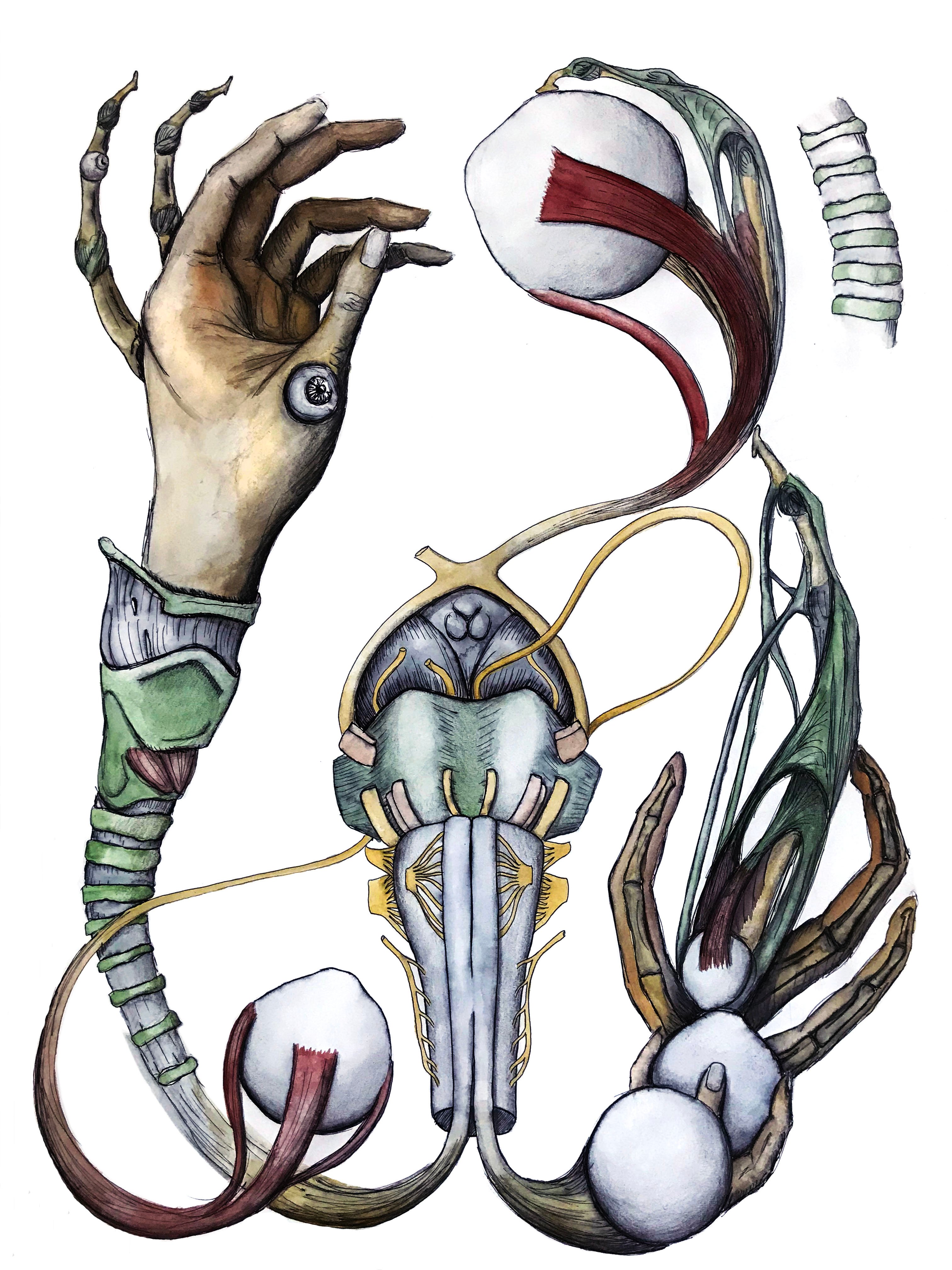Abstract
This drawing considers the nature and scope of clinicians’ responsibilities to speak and act in ways that express great regard for the breadth and depth of their capacity to influence patients’ pre- and postsurgical self-understandings.
Figure. Transfigurations of Body and Mind

Media
Pen and watercolor.
Caption
Conversations clinicians have with patients about their disease processes, code status, and informed consent, for example, can influence how patients reconcile their illness experiences with their identities. In operating room settings, actions we commit with our hands can drastically change how patients see themselves and how they orient themselves to their lives. Anatomical features of our patients’ bodies are transformed physically, as are our—and their—perceptions of their pre- and postsurgical bodies. This drawing considers the nature and scope of our responsibilities as clinicians to speak and act in ways that express great regard for the breadth and depth of our capacity to influence patients’ self-understandings.




